Chiropractic Technique, Principles and Procedures
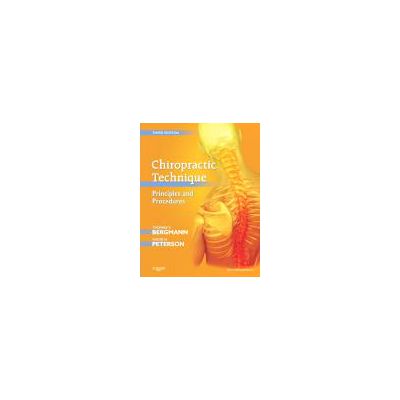
Preț: 525,00 lei
Disponibilitate: în stoc la furnizor
Autor: Thomas F. Bergmann, DC and David H. Peterson
ISBN: 978-0-323-04969-6
Editura: Elsevier
Anul publicarii: 2011
Ediția: 3
Pagini: 496
Categoria: REHABILITATION MEDICINE
DESCRIERE
No other book offers a complete guide to chiropractic adjustive techniques! Chiropractic Technique, 3rd Edition makes it easy to understand essential procedures and provides a rationale for their use. Written by Thomas F. Bergmann, DC, FICC, and David H. Peterson, DC, and backed by the latest research studies, this bestseller describes the basic principles needed to evaluate, select, and apply specific adjustive procedures. With a review of chiropractic history, detailed descriptions of joint examination and adjustive techniques for the spine, pelvis, and extremities, and a companion Evolve website with how-to videos, this book is a must-have reference for students and clinicians.
Key Features
* Offers over 700 photos and line drawings depicting the correct way to set up and perform adjustive procedures, clarifying concepts, and showing important spinal and muscle anatomy.
* Includes up-to-date research studies and methods for validating manual therapy.
* Discusses mechanical principles so you can determine not only which adjustive procedure to use and when, but also why you should choose one approach over another.
* Organizes content thematically with a discussion of practical anatomy, kinematics, evaluation, and technique for each joint.
* Covers anatomy and biomechanics in detail, along with adjustive techniques for the spine, extraspinal techniques, and additional techniques for special populations, helping you fully prepare for board examinations.
* Covers the manipulable lesion as a basis for treating disorders with manual therapy, including chiropractic techniques.
* Includes content on low-force techniques to help you treat elderly patients and patients who are in acute pain.
* Includes useful appendices with clinical information as well as interesting historical information, including a feature on practitioners who developed specific techniques.
New to this Edition
* NEW Evolve website with video clips of the author performing all the adjustive procedures in the book.
* Updated and expanded content covers new information on joint anatomy and assessment including Newton's laws and fibrocartilage, joint malposition, joint subluxation, history of subluxation/dysfunction, and sacroiliac articulation.
* A procedure index printed on the inside of the front cover makes it easier to find specific procedures.
Table of Contents
Chapter 1: General Overview of the Chiropractic Profession
The Past
The Present
The Future
Conclusions
Chapter 2: Joint Anatomy and Basic Biomechanics
Fundamental Concepts, Principles, and Terms
Joint Function
Mechanical Forces Acting on Connective Tissue
Properties of Connective Tissue
Models of Spine Function
Chapter 3: Joint Assessment Principles and Procedures
The Manipulable Lesion
Subluxation
Vertebral Subluxation Complex
Joint Subluxation/Dysfunction Syndrome
Spinal Listings
Clinical Evaluation of Joint Subluxation/Dysfunction Syndrome
Clinical Documentation
Chapter 4: Principles of Adjustive Technique
Classification and Definition of Manual Therapies
Joint Manipulative Procedures
Soft Tissue Manipulative Procedures
Indications for Adjustive Therapy
Mechanical Spine Pain
Joint Subluxation/Dysfunction Syndromes
Contraindications to and Complications of Adjustive Therapy
Effects of Adjustive Therapy
Application of Adjustive Therapy
Chapter 5: The Spine: Anatomy, Biomechanics, Assessment and Adjustive Techniques
Structure and Function of the Spine
Evaluation of Spinal Joint Function
Cervical Spine
Adjustments of the Cervical Spine
Thoracic Spine
Adjustments of the Thoracic Spine and Rib Cage
Lumbar Spine
Adjustments of the Lumbar Spine
Pelvic Joints
Adjustments of the Pelvis
Chapter 6: Extraspinal Techniques
Role of the Peripheral Joints
Temporomandibular Joint
Shoulder
Elbow
Wrist and Hand
Hip
Knee
Ankle and Foot
Chapter 7: Nonthrust Procedures: Mobilization, Traction, and Soft Tissue Techniques
Joint Mobilization
Manual Traction-Distraction
McKenzie Method
Cranial Manipulation
Soft Tissue Manipulation
Conclusions
Glossary
Appendices
1: Named Chiropractic Techniques
2: Reliability Studies
3: Citation Synopsis
Key Features
* Offers over 700 photos and line drawings depicting the correct way to set up and perform adjustive procedures, clarifying concepts, and showing important spinal and muscle anatomy.
* Includes up-to-date research studies and methods for validating manual therapy.
* Discusses mechanical principles so you can determine not only which adjustive procedure to use and when, but also why you should choose one approach over another.
* Organizes content thematically with a discussion of practical anatomy, kinematics, evaluation, and technique for each joint.
* Covers anatomy and biomechanics in detail, along with adjustive techniques for the spine, extraspinal techniques, and additional techniques for special populations, helping you fully prepare for board examinations.
* Covers the manipulable lesion as a basis for treating disorders with manual therapy, including chiropractic techniques.
* Includes content on low-force techniques to help you treat elderly patients and patients who are in acute pain.
* Includes useful appendices with clinical information as well as interesting historical information, including a feature on practitioners who developed specific techniques.
New to this Edition
* NEW Evolve website with video clips of the author performing all the adjustive procedures in the book.
* Updated and expanded content covers new information on joint anatomy and assessment including Newton's laws and fibrocartilage, joint malposition, joint subluxation, history of subluxation/dysfunction, and sacroiliac articulation.
* A procedure index printed on the inside of the front cover makes it easier to find specific procedures.
Table of Contents
Chapter 1: General Overview of the Chiropractic Profession
The Past
The Present
The Future
Conclusions
Chapter 2: Joint Anatomy and Basic Biomechanics
Fundamental Concepts, Principles, and Terms
Joint Function
Mechanical Forces Acting on Connective Tissue
Properties of Connective Tissue
Models of Spine Function
Chapter 3: Joint Assessment Principles and Procedures
The Manipulable Lesion
Subluxation
Vertebral Subluxation Complex
Joint Subluxation/Dysfunction Syndrome
Spinal Listings
Clinical Evaluation of Joint Subluxation/Dysfunction Syndrome
Clinical Documentation
Chapter 4: Principles of Adjustive Technique
Classification and Definition of Manual Therapies
Joint Manipulative Procedures
Soft Tissue Manipulative Procedures
Indications for Adjustive Therapy
Mechanical Spine Pain
Joint Subluxation/Dysfunction Syndromes
Contraindications to and Complications of Adjustive Therapy
Effects of Adjustive Therapy
Application of Adjustive Therapy
Chapter 5: The Spine: Anatomy, Biomechanics, Assessment and Adjustive Techniques
Structure and Function of the Spine
Evaluation of Spinal Joint Function
Cervical Spine
Adjustments of the Cervical Spine
Thoracic Spine
Adjustments of the Thoracic Spine and Rib Cage
Lumbar Spine
Adjustments of the Lumbar Spine
Pelvic Joints
Adjustments of the Pelvis
Chapter 6: Extraspinal Techniques
Role of the Peripheral Joints
Temporomandibular Joint
Shoulder
Elbow
Wrist and Hand
Hip
Knee
Ankle and Foot
Chapter 7: Nonthrust Procedures: Mobilization, Traction, and Soft Tissue Techniques
Joint Mobilization
Manual Traction-Distraction
McKenzie Method
Cranial Manipulation
Soft Tissue Manipulation
Conclusions
Glossary
Appendices
1: Named Chiropractic Techniques
2: Reliability Studies
3: Citation Synopsis
Categorii de carte
-Comandă specială
-Edituri
-Promo
-Publicaţii Callisto
-Cărţi noi
-- 670,95 leiPRP: 745,50 lei
- 340,20 leiPRP: 378,00 lei
- 831,60 leiPRP: 924,00 lei
Promoţii
-- 670,95 leiPRP: 745,50 lei
- 340,20 leiPRP: 378,00 lei
- 147,00 leiPRP: 210,00 lei


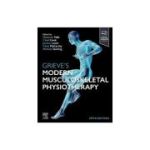

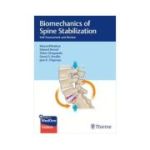
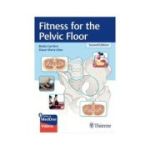
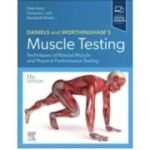





REVIEW-URI